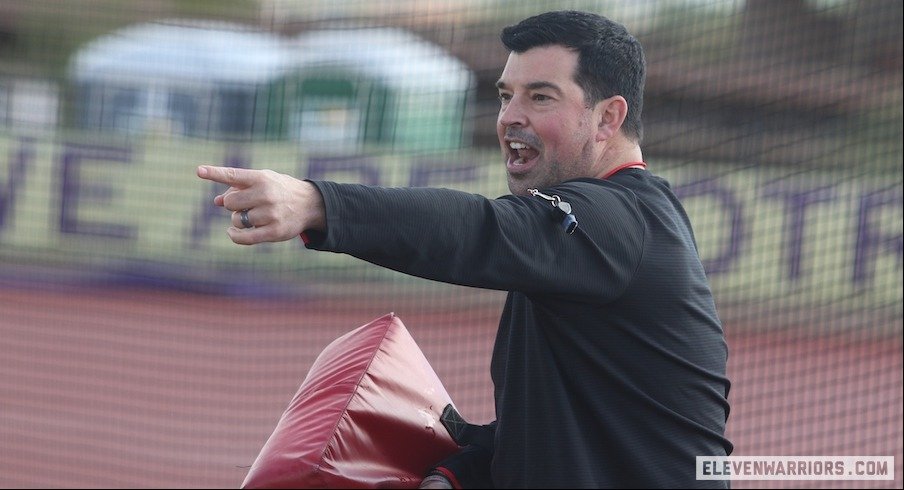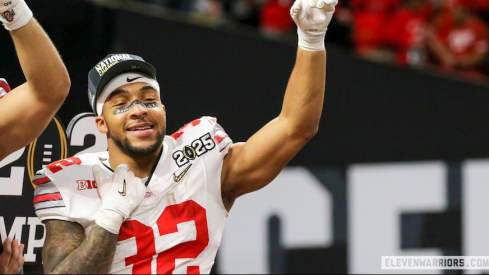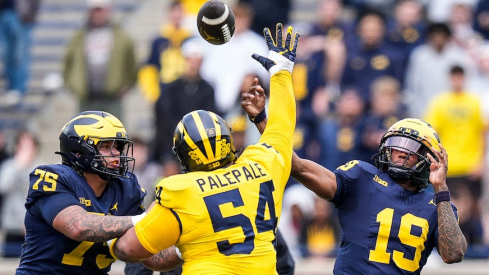Even though transfers have become much more commonplace in college football, Ohio State hasn’t lost a lot of players to the transfer portal in Ryan Day’s first three years as head coach.
Since Day became Ohio State’s head coach at the end of the 2018 season, the Buckeyes have lost only 13 total scholarship players to the transfer portal. While that might have seemed like a lot even five years ago, it should be viewed as a positive that Ohio State has lost only five scholarship players to transfers from last season’s roster. Alabama, by comparison, has lost 10 scholarship players to the transfer portal this offseason; even Clemson, a program that typically hasn’t had a ton of transfer portal activity, has lost eight players to transfers from last year’s roster.
With the exception of wide receiver Jameson Williams, who’s now in line to start at Alabama, just about all of the players who have transferred out of Ohio State in the Day era were backups who weren’t in line to play major roles for the Buckeyes and might not have in the future even if they had stuck around.
Yet you don’t have to look too hard to find examples of players on Ohio State’s current roster who could have transferred elsewhere for the opportunity to play more this year or over the past few years, yet have decided to stay the course with the Buckeyes. And Day says that’s something he takes “a lot of pride in.”
“Especially at a place like Ohio State where the easy thing to say is, ‘Well, if I can’t play at Ohio State, I can play at 115 other schools,’” Day said. “But we have a great history of that.”
Day believes the process of making players want to remain at Ohio State once they’ve entered the program starts with how the coaching staff recruits them before they arrive at Ohio State. Day believes in being honest and transparent with prospects rather than making promises to try to convince players to become Buckeyes, and he believes that has played a big part in limiting roster attrition.
“When you’re talking to them in recruiting, you’re bringing them here because of the tradition, because of the culture and you’re allowing them to choose the school for the right reasons. Not talking them into coming here,” Day told Eleven Warriors in an interview this week. “If you talk someone into coming here and it doesn’t go exactly the way that you planned, they’re gonna leave. And so we ask all the time, when they commit, you’re choosing the school for the right reasons? Which means when things get hard, you gotta stick it out.
“Maybe that’s not everybody’s recruiting pitch, but that’s ours, because it is gonna get hard. You are gonna question whether you want to be here. But if you choose it for the right reasons, then you’re gonna make it work when times get tough. And it doesn’t always work out. There’s still guys who want to have opportunities other places, just like everybody else. But I think that’s really important moving forward in the next few years.”
Day also recognizes that commitment is a two-way street, so he believes his program has a responsibility to do what it can to ensure that players who come to Ohio State have the opportunity to graduate from Ohio State regardless of how much they play for the Buckeyes. He pointed to wide receiver Kamryn Babb, who has been injured for nearly his entire Ohio State career yet was named a team captain last week, and cornerback Demario McCall, who’s back with the Buckeyes for a sixth year despite playing sparingly as an offensive player over the past five years, as examples of players who have grown within the program even though they haven’t seen much playing time.
“There’s guys like Kam Babb who really hasn’t played much football at all in his whole career, but now he’s a captain. He’s had four ACL surgeries, but we didn’t move on from him. He’s still here. He’s one of us,” Day said. “Demario McCall has gone through a lot in his career, he’s now got an opportunity to play at corner for us. Maybe at other programs, that wouldn’t have gone that well. I think that we owe it to the families and the recruits to give them everything we have to see it through to their graduation, and to find ways to get them on the field. I think that’s important.”
Day, who was an NFL quarterbacks coach before he joined Ohio State’s coaching staff in 2017, preaches the importance of proper development to his players, making the case that getting to the NFL as quickly as possible isn’t always what’s best for a player’s career. Even if a player has to wait his turn for two or three years before playing a major role on the field, how he develops just by being a part of the Ohio State football program can make him a better player in the long run.
“I think that the instant gratification world right now is you come in as a freshman, you play and then in three years you go to the NFL. What’s the reality of all of that? It’s very, very far and few between,” Day said. “The guys that actually make it at the NFL level get developed. They’re ready when they get to that league. Because once you’re in that league, if you’re not ready to roll, then you’re not gonna last long.”
Where making that case can get more difficult, Day acknowledges, is when talking to family and friends who don’t see everything that happens inside the Woody Hayes Athletic Center.
“I think the honest truth is, the hard thing for the (players), is managing their family back home and their friends back home who want to see everything right now,” Day said. “They don’t see what goes on on a day-to-day basis. They don’t know what it’s like to be part of a team. They’re not there. And so, for a lot of those guys, they get it. How do they then talk to their family and their people back home and explain to them, ‘This is allowing me the opportunity to grow, allowing me the opportunity to develop. I really like being here.’ There’s nothing wrong with that.”
“It is gonna get hard. You are gonna question whether you want to be here. But if you choose it for the right reasons, then you’re gonna make it work when times get tough.”– Ryan Day on Ohio State's recruiting pitch
Regardless of whether he’s talking to a player or a parent, though, Day says he always goes back to honesty and transparency – even if that means not telling them what they want to hear.
“Just try to be honest,” Day said. “As honest as possible. Tell them on the front end what it’s gonna be like and then tell them while they’re here. Just communicate. ‘This is what’s going on, this is where they need to improve. This is what they’re doing well.’ And if we don’t think that they are gonna play here, you gotta be honest with that too. You gotta be like, ‘Well, it’s probably gonna be a couple years before he gets on the field.’ Or if he just continues to do these three things, then he’s gonna have an opportunity to play.
“I think people appreciate the communication, they appreciate the honesty, and then you just kind of work through it from there. But like anything else, when you have 120 guys on your team and you are a family, not every day’s perfect. Just like in everyone’s family, there’s gonna be disagreements, there’s gonna be things like that. But if you can talk through it and there’s transparency, it allows you the opportunity to continue that culture of a family and love, even though it’s not always easy.”
Keeping players happy and discouraging them from transferring probably isn’t going to get any easier in the years to come now that players will know going into 2022 that they’ll have the one-time transfer exception at their disposal. Ohio State has a particularly delicate situation to manage at the quarterback position, where Jack Miller, Kyle McCord and Quinn Ewers have to play the waiting game now that C.J. Stroud has been named Ohio State’s starter.
Day acknowledges there will likely be players who decide to transfer out of the program come January. For right now, he’s simply asked the quarterbacks and everyone else on the team to be committed to the team for the 2021 season, knowing it’s not realistic in modern times to expect all of his players to stay at Ohio State for their entire college careers.
“We ask these guys to give us a commitment for a year at least, that they’re gonna be here, that they’re gonna be with the team until January. And then you come up for air, because it’s a little bit year to year,” Day said. “And that’s the reality of it, as much as I hate to say that. If someone heard me say that 10 years ago, they’d be like, ‘Oh my god, he’s a renegade.’ But that’s just the way it is.”
If his first three years on the job have been any indication, though, Ohio State fans shouldn’t be worried about massive roster turnover from year to year, even now that college football’s version of free agency has begun. Day has strived to create a culture within the Ohio State football program that players want to be a part of and remain a part of, and how he’s limited roster attrition so far is evidence that he’s done that effectively so far.
“The thing that made me stay is the brotherhood that's here,” McCall said earlier this month when asked why he’s still at Ohio State. “It's hard to leave. It's hard to leave the love and the brotherhood and the guys in the locker room.”


